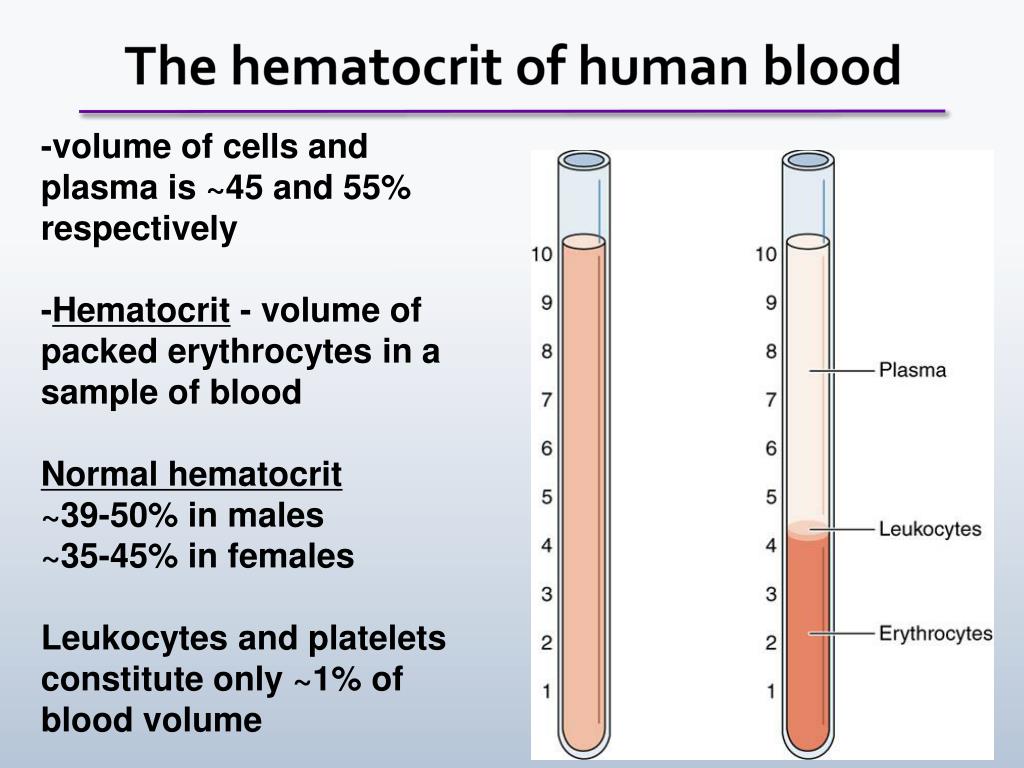Hematocrit blood test interpret. Hematocrit and Hemoglobin Blood Tests: Understanding Your Results
What do hematocrit and hemoglobin levels indicate. How are these blood tests performed. What are normal ranges for hematocrit and hemoglobin. When should you be concerned about your results.
The Importance of Hematocrit and Hemoglobin Tests
Hematocrit and hemoglobin tests are crucial components of a complete blood count (CBC), providing valuable insights into your overall health. These tests measure different aspects of your red blood cells, which are responsible for carrying oxygen throughout your body.
What exactly do these tests reveal? Hematocrit measures the percentage of your blood volume that consists of red blood cells, while hemoglobin tests determine the amount of this oxygen-carrying protein in your blood. Together, they paint a comprehensive picture of your body’s oxygen-carrying capacity and can help diagnose various conditions.
Understanding Hematocrit: The Packed-Cell Volume Test
The hematocrit test, also known as the packed-cell volume (PCV) test, is a simple yet informative blood test. It measures the proportion of red blood cells in your blood, typically expressed as a percentage.

How is a hematocrit test performed? A small blood sample is drawn from a vein in your arm using a needle. The process is quick and relatively painless, with most people able to resume normal activities immediately after the test.
Normal Hematocrit Ranges
What are considered normal hematocrit levels? Normal ranges can vary depending on factors such as age, gender, and the specific laboratory conducting the test. However, general guidelines for adults are:
- Men: 38.3% to 48.6%
- Women: 35.5% to 44.9%
It’s important to note that these ranges may differ slightly between healthcare providers and laboratories.
Interpreting Low Hematocrit Results
What does a lower than normal hematocrit indicate? Low hematocrit levels can suggest several conditions:
- Anemia (insufficient supply of healthy red blood cells)
- Vitamin or mineral deficiencies, particularly iron, folate, or vitamin B12
- Recent or long-term blood loss
- Overhydration
- Pregnancy (due to increased plasma volume)
- Certain chronic diseases or infections
Understanding High Hematocrit Results
What can cause elevated hematocrit levels? Higher than normal hematocrit can be indicative of:

- Dehydration
- Polycythemia vera (a disorder causing overproduction of red blood cells)
- Lung or heart disease
- Living at high altitudes
- Smoking
Hemoglobin: The Oxygen-Carrying Protein
Hemoglobin is a protein found in red blood cells that’s responsible for transporting oxygen throughout your body. A hemoglobin test measures the amount of this vital protein in your blood.
How is hemoglobin measured? Like the hematocrit test, a hemoglobin test requires a small blood sample. It’s often performed as part of a complete blood count (CBC) and doesn’t require any special preparation.
Normal Hemoglobin Ranges
What are considered normal hemoglobin levels? As with hematocrit, normal ranges can vary, but general guidelines for adults are:
- Men: 13.5 to 17.5 grams per deciliter (g/dL)
- Women: 12.0 to 15.5 g/dL
Low Hemoglobin Levels
What does low hemoglobin indicate? Low hemoglobin levels can suggest:
- Various types of anemia
- Blood loss
- Nutritional deficiencies
- Certain chronic diseases
- Bone marrow problems
High Hemoglobin Levels
What can cause elevated hemoglobin? High hemoglobin levels may indicate:
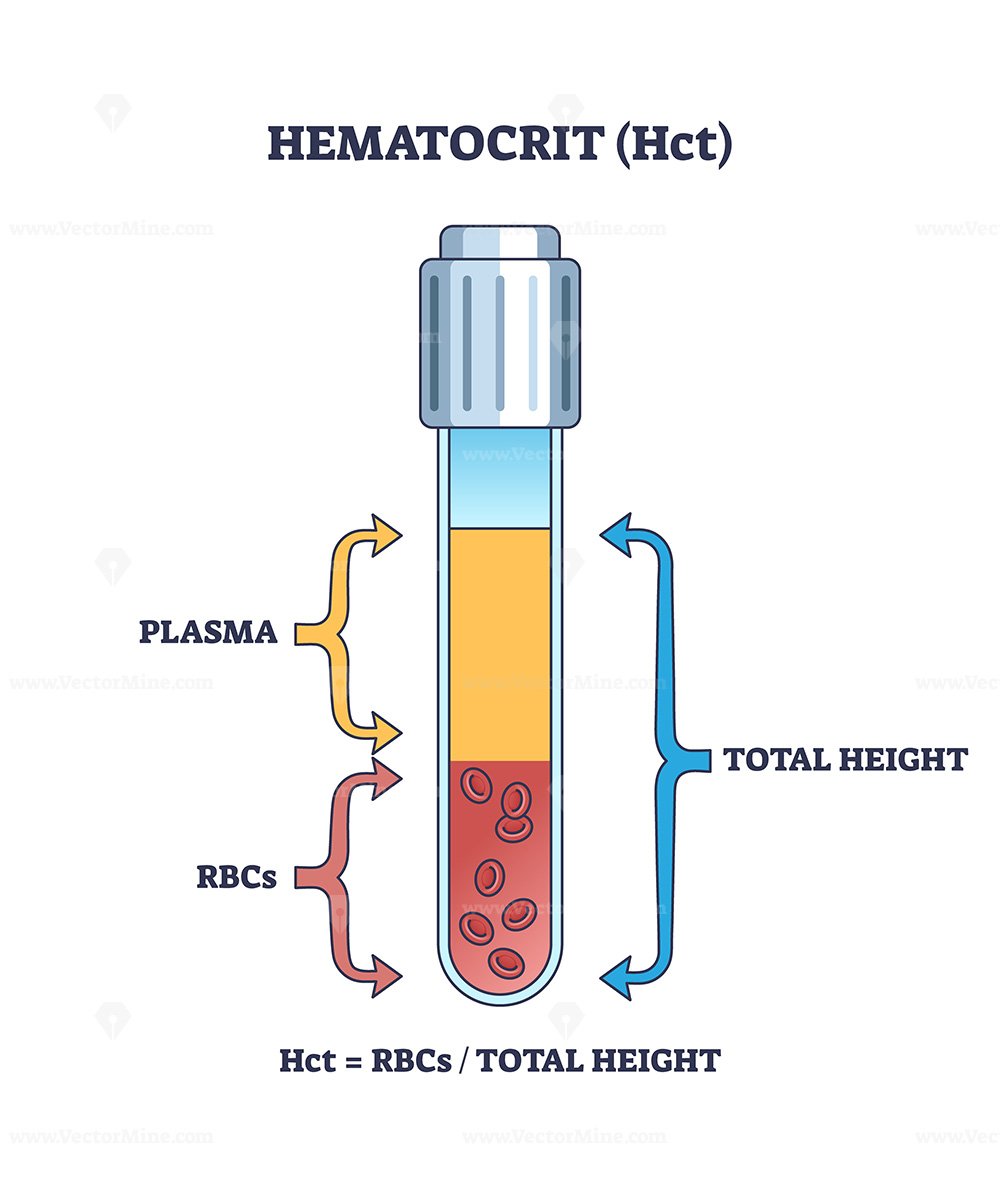
- Polycythemia vera
- Dehydration
- Lung disease
- Heart disease
- Living at high altitudes
The Relationship Between Hematocrit and Hemoglobin
How are hematocrit and hemoglobin related? These two measurements are closely linked, as they both provide information about your red blood cells. Generally, hemoglobin levels are about one-third of the hematocrit value. For example, if your hematocrit is 45%, your hemoglobin level would typically be around 15 g/dL.
Why are both tests necessary? While closely related, these tests provide slightly different information. Hematocrit gives an overall picture of red blood cell volume, while hemoglobin specifically measures the oxygen-carrying protein. Together, they provide a more comprehensive assessment of your blood’s oxygen-carrying capacity.
Factors Affecting Hematocrit and Hemoglobin Levels
What can influence your hematocrit and hemoglobin levels? Several factors can impact these measurements:
- Age and gender
- Pregnancy
- Altitude
- Smoking
- Hydration status
- Recent blood loss or donation
- Certain medications
- Chronic health conditions
How do these factors affect test results? For instance, pregnancy can lower hematocrit and hemoglobin levels due to increased plasma volume. Living at high altitudes can increase both measurements as the body adapts to lower oxygen levels. Understanding these influencing factors is crucial for accurate interpretation of your results.
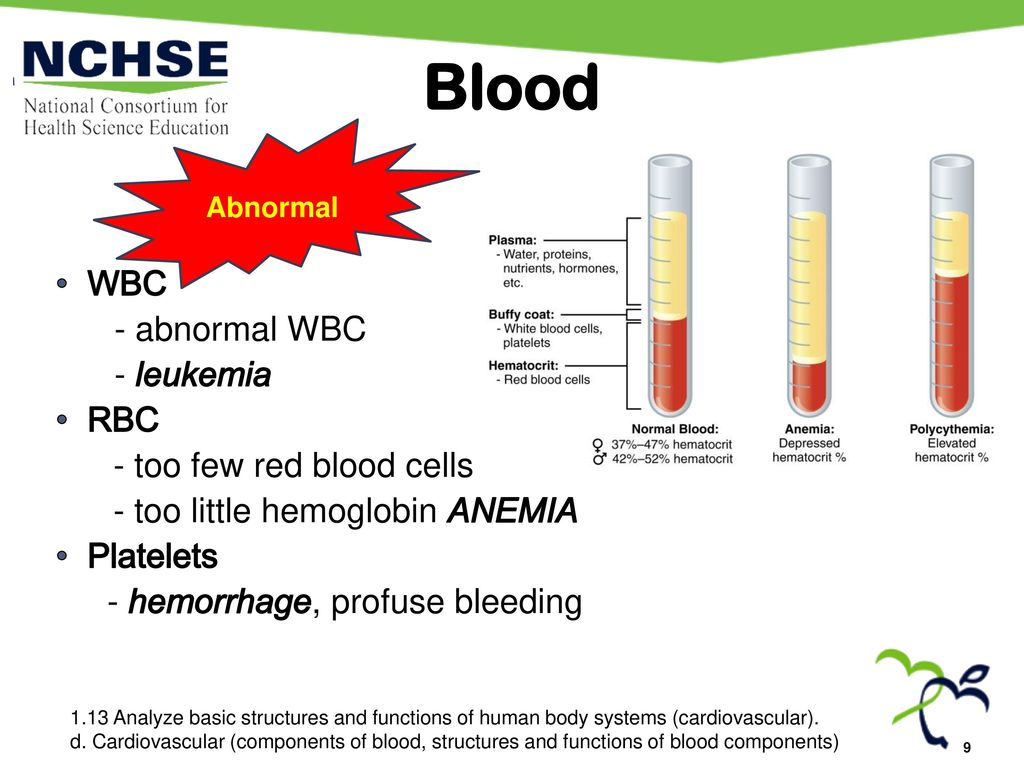
When to Be Concerned About Your Results
When should you worry about abnormal hematocrit or hemoglobin levels? While slight variations from the normal range aren’t always cause for concern, significant deviations may indicate underlying health issues. It’s important to discuss your results with your healthcare provider, who can interpret them in the context of your overall health and any symptoms you may be experiencing.
What symptoms might accompany abnormal results? Low levels may cause fatigue, weakness, shortness of breath, or pale skin. High levels might lead to headaches, dizziness, or vision problems. However, many people with abnormal results may not experience any noticeable symptoms.
Follow-up Testing and Diagnosis
What additional tests might be needed if your results are abnormal? Your doctor may order further tests to determine the underlying cause of abnormal hematocrit or hemoglobin levels. These might include:
- Iron studies
- Vitamin B12 and folate tests
- Reticulocyte count
- Peripheral blood smear
- Bone marrow biopsy
Treatment Options for Abnormal Hematocrit and Hemoglobin Levels
How are abnormal hematocrit and hemoglobin levels treated? Treatment depends on the underlying cause and may include:
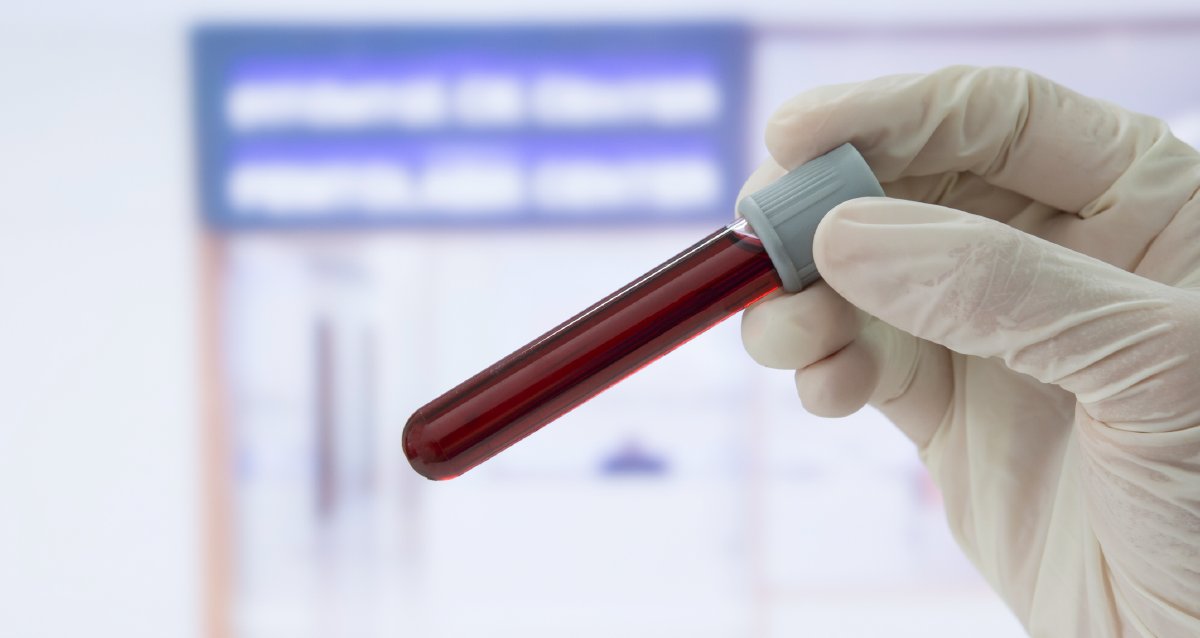
- Iron, vitamin B12, or folate supplements for deficiencies
- Medications to stimulate red blood cell production
- Blood transfusions for severe anemia
- Phlebotomy (blood removal) for conditions causing high levels
- Treatment of underlying chronic conditions
What lifestyle changes can help maintain healthy levels? Maintaining a balanced diet rich in iron and vitamins, staying hydrated, exercising regularly, and avoiding smoking can all contribute to healthy hematocrit and hemoglobin levels.
The Role of Hematocrit and Hemoglobin Tests in Monitoring Chronic Conditions
How are these tests used in managing chronic diseases? Hematocrit and hemoglobin tests play a crucial role in monitoring various chronic conditions, including:
- Kidney disease
- Heart disease
- Lung disorders
- Blood disorders
- Cancer
Why are regular tests important for chronic conditions? Regular monitoring can help track disease progression, evaluate treatment effectiveness, and guide medical decisions. For instance, in kidney disease, these tests can indicate when anemia treatment may be necessary.
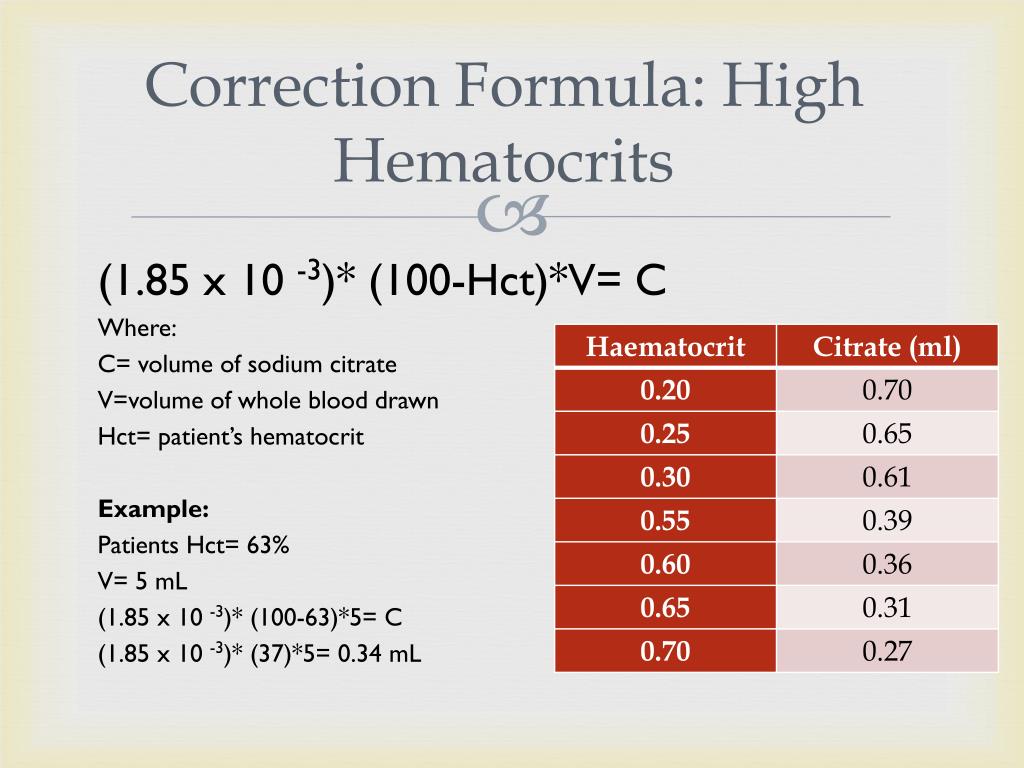
Hematocrit and Hemoglobin in Sports Medicine
How do these tests relate to athletic performance? In sports medicine, hematocrit and hemoglobin levels are often monitored to assess an athlete’s oxygen-carrying capacity and overall fitness. Higher levels can indicate better endurance, while abnormally high levels might raise concerns about blood doping in competitive sports.
What precautions should athletes take regarding these levels? While some athletes may be tempted to artificially boost their hematocrit and hemoglobin levels, this practice is both dangerous and prohibited in competitive sports. Instead, athletes should focus on natural methods to optimize their oxygen-carrying capacity, such as altitude training and proper nutrition.
Technological Advances in Hematocrit and Hemoglobin Testing
How has technology improved these tests? Recent advancements have made hematocrit and hemoglobin testing faster, more accurate, and more accessible. Point-of-care devices now allow for rapid testing in various healthcare settings, providing quick results for timely decision-making.
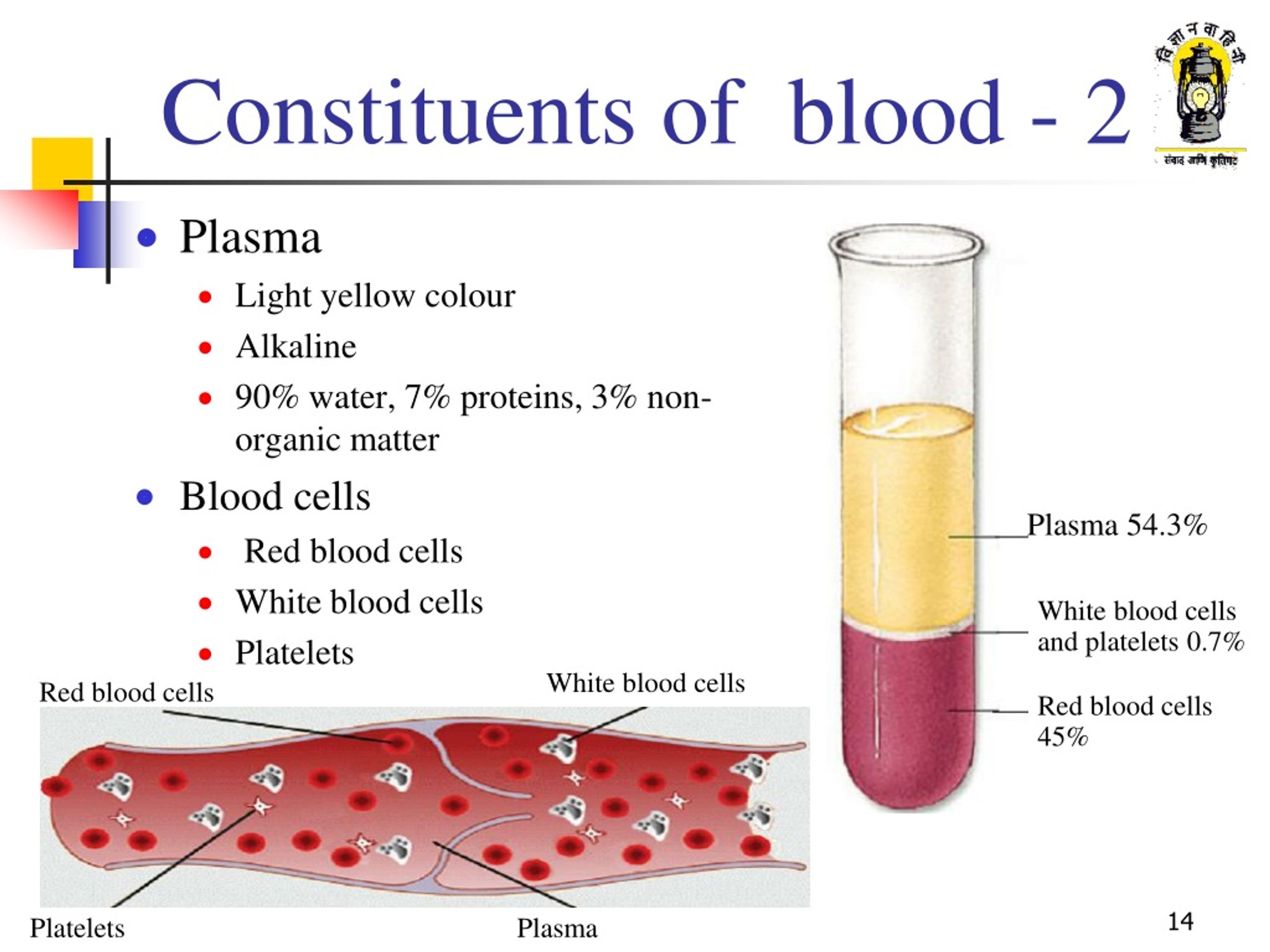
What are the benefits of these technological improvements? Faster results mean quicker diagnoses and treatment decisions. Improved accuracy reduces the need for repeat testing. Additionally, some newer devices require smaller blood samples, making the testing process more comfortable for patients.
Future Directions in Hematocrit and Hemoglobin Research
What developments can we expect in the future? Ongoing research is focusing on several areas:
- Non-invasive testing methods
- Integration with wearable health devices
- Artificial intelligence for result interpretation
- Personalized reference ranges based on individual factors
How might these advancements impact patient care? These developments could lead to more frequent monitoring, earlier detection of abnormalities, and more personalized treatment approaches, ultimately improving patient outcomes.
In conclusion, understanding your hematocrit and hemoglobin test results is an important aspect of managing your health. These tests provide valuable insights into your body’s oxygen-carrying capacity and can help diagnose various conditions. By staying informed about what these tests measure and what the results mean, you can take a more active role in your healthcare decisions. Remember, while this information is helpful, it’s always best to discuss your specific results and any concerns with your healthcare provider.

Interpreting Your Blood Test Results: A Concise Guide
Posted
by Marc Shomer
on Apr 17, 2023
in Blood Test
|
No Comments
How to Interpret Your Blood Test Results: A Quick Guide
Learning to interpret your blood test results empowers you to understand your body. So what does it all mean? In this guide, we address some of the most common items on a blood test report.
To learn more about what blood test results mean, call 626-304-0404 today!
Complete Blood Count (CBC)
Blood cell counts evaluate the parts of the blood:
- White blood cells (WBC) work for your immune system by fighting infections, but allergic reactions can also produce them. High white blood cell count is also linked to heart disease.
- Red blood cells (RBC) Low levels of red blood cells might indicate anemia, nutritional deficiencies, kidney problems, or bone marrow damage.
 High levels might mean simple dehydration but could also point to kidney or heart problems or the onset of fatty liver disease.
High levels might mean simple dehydration but could also point to kidney or heart problems or the onset of fatty liver disease. - Hemoglobin levels measure how well your blood carries oxygen. Mean corpuscular hemoglobin count (MCHC) measures how much of this protein each red blood cell contains.
- Hematocrit describes the volume of red blood cells compared to the other components, like blood plasma. Low hematocrit levels may indicate recent blood loss, vitamin deficiency, or anemia. High levels could point to dehydration or heart disease.
- Platelets bind blood into clots to stop bleeding. Without enough platelets in your system, you develop bleeding disorders, and with too many, you get clotting disorders. This test provides evidence of autoimmune diseases or bone marrow disorders.
Comprehensive Metabolic Panel CMP
Metabolism refers to the chemical components that help regulate your body:
- Glucose levels measure blood sugar and indicate how your body processes sugar, screening for diabetes.

- Electrolytes are essential minerals that affect hydration, acidity, and muscle function and also relate to the health of organs that require them, such as calcium for bones.
- Bilirubin indicates broken hemoglobin and causes jaundice
- Albumin is the primary component of blood plasma. Low levels hint at malnutrition, inflammation, or liver and kidney diseases.
- Creatine supplies energy to muscles. Your kidneys remove creatine from the blood, so high creatine levels warn of kidney problems.
Lipid Panel
Lipids, the medical term for fats, serve vital functions in the body. Here’s what lipid levels mean in blood samples:
- Triglycerides come from the liver and bounce high from sugar, fat, and alcohol. However, liver and thyroid disease and genetic conditions may also increase triglycerides.
- High-density lipoprotein (HDL), known as “good cholesterol”, lowers the risk of cardiovascular disease.

- Low-density lipoprotein (LDL), or “bad cholesterol,” repairs cells, but high levels can clog arteries and cause coronary artery disease.
Schedule Fast, Accurate Blood Tests
Blood test results provide clues to various system disorders or excellent health. While your doctor should discuss blood test results with you, learning to read these results helps you understand, and advocate for, your own health.
Do you need to schedule a blood test? Call Advance Urgent Care Of Pasadena at 626-304-0404 today.
Hematocrit test | Beacon Health System
Overview
A hematocrit (he-MAT-uh-krit) test measures the proportion of red blood cells in your blood. Red blood cells carry oxygen throughout your body. Having too few or too many red blood cells can be a sign of certain diseases.
The hematocrit test, also known as a packed-cell volume (PCV) test, is a simple blood test.
Why it’s done
A hematocrit test is part of a complete blood count (CBC). Measuring the proportion of red blood cells in your blood can help your doctor make a diagnosis or monitor your response to a treatment.
Measuring the proportion of red blood cells in your blood can help your doctor make a diagnosis or monitor your response to a treatment.
A lower than normal hematocrit can indicate:
- An insufficient supply of healthy red blood cells (anemia)
- A large number of white blood cells due to long-term illness, infection or a white blood cell disorder such as leukemia or lymphoma
- Vitamin or mineral deficiencies
- Recent or long-term blood loss
A higher than normal hematocrit can indicate:
- Dehydration
- A disorder, such as polycythemia vera, that causes your body to produce too many red blood cells
- Lung or heart disease
How you prepare
The hematocrit is a simple blood test. You won’t need to fast before the test or make other preparations.
What you can expect
The blood sample is generally drawn with a needle from a vein in your arm. You may feel some tenderness at the site, but you’ll be able to resume normal activities afterward.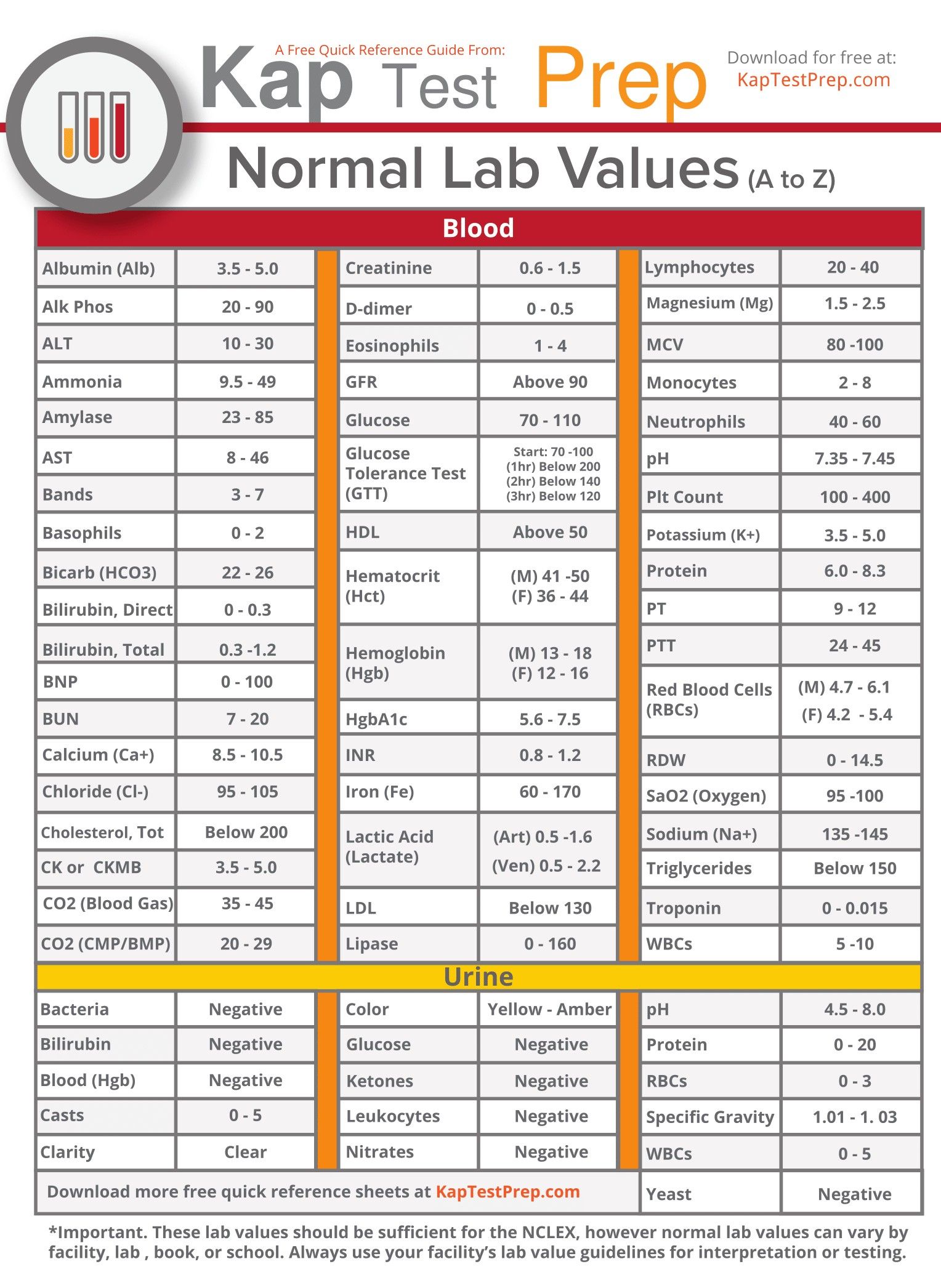
Results
Results from your hematocrit test are reported as the percentage of your blood volume that’s composed of red blood cells. Normal ranges vary substantially with race, age and sex. The definition of normal red-blood cell percentage also varies from one medical practice to another.
Generally, a normal range is considered to be:
- For men, 38.3 to 48.6 percent
- For women, 35.5 to 44.9 percent
For children ages 17 and younger, the normal range varies by age and sex.
Your hematocrit test provides just one piece of information about your health. Talk to your doctor about what your hematocrit test result means in light of the symptoms you’re experiencing and the results of other diagnostic tests.
Accuracy of test results
A number of factors can affect the outcome of a hematocrit test and yield inaccurate or misleading results, including:
- Living at a high altitude
- Pregnancy
- Significant recent blood loss
- Recent blood transfusion
- Severe dehydration
Your doctor will take into account possible complicating factors when interpreting the results of your hematocrit test. Your doctor may want to repeat the hematocrit test and do other blood tests if results provide conflicting or unexpected information.
Your doctor may want to repeat the hematocrit test and do other blood tests if results provide conflicting or unexpected information.
Last Updated: December 14th, 2021
© 1998-2023 Mayo Foundation for Medical Education and Research (MFMER). All rights reserved.
Terms of Use
Deciphering a blood test on the analyzer – Article in Yekaterinburg
Modern hematological analyzers have the ability to decipher from 5 to 24 blood parameters:
- WBC (white blood cells – white blood cells, leukocytes). The indicator characterizes the absolute content of leukocytes.
- RBC (red blood cells – red blood cells, erythrocytes) shows the absolute content of erythrocytes in the blood.
- HGB (Hb, hemoglobin, hemoglobin) – the concentration of hemoglobin in whole blood.
- HCT (hematocrit, hematocrit). Hematocrit determines the ratio of the volume of formed elements to plasma.
- PLT (platelets, platelets) – absolute number of platelets
Erythrocyte indices Using the analysis, you can determine the presence of microcytosis, normocytosis, macrocytosis.
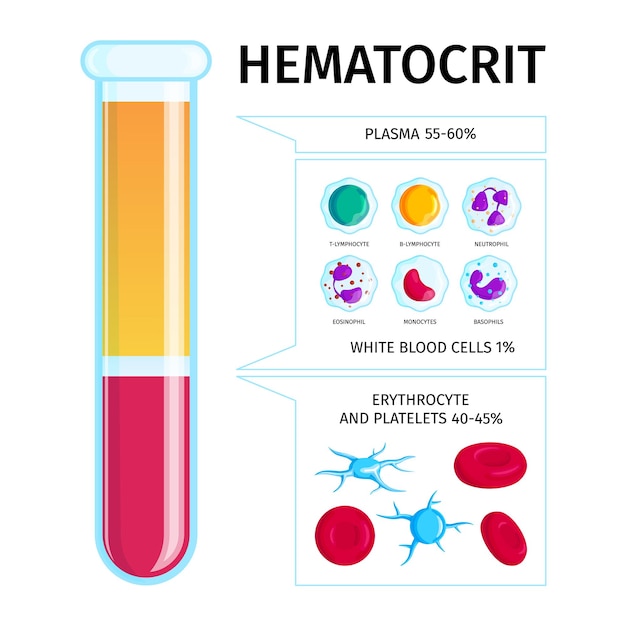
- LYM% (LY%) (lymphocyte) — percentage of lymphocyte concentration.
- LYM# (LY#) (lymphocyte) — absolute number of lymphocytes.
- MXD% – relative percentage of a mixture consisting of monocytes, basophils and eosinophils.
- MXD# is the absolute amount of a mixture consisting of monocytes, basophils and eosinophils.
- NEUT% (NE%) (neutrophils) – percentage of neutrophils.
- NEUT# (NE#) (neutrophils) — absolute number of neutrophils.
- MON% (MO%) (monocyte) – percentage of monocytes
- MON# (MO#) (monocyte) – absolute number of monocytes
- EO% – relative percentage of eosinophils.
- EO# is the absolute number of eosinophils.
- BA% – relative percentage of basophils.
- BA# is the absolute number of basophils.
- IMM% – relative percentage of immature granulocytes.

- IMM# is the absolute number of immature granulocytes.
- ATL% – relative percentage of atypical lymphocytes.
- ATL# is the absolute number of atypical lymphocytes.
- GR% – relative percentage of granulocytes.
- GR# is the absolute number of granulocytes.
Erythrocyte indices
- RBC/HCT — mean volume of erythrocytes.
- HGB/RBC is the average amount of hemoglobin in an erythrocyte.
- HGB/HCT — average saturation of erythrocyte hemoglobin.
- RDW – Red cell Distribution Width – “the width of the red blood cell distribution.” Characterizes the heterogeneity of erythrocytes.
- RDW-SD is the standard deviation of the distribution width of erythrocytes by volume.
- RDW-CV – coefficient of variation in the relative width of the distribution of erythrocytes by volume.
- P-LCR is a coefficient indicating the number of large platelets.
- ESR (ESR) (erythrocyte sedimentation rate) is a marker of pathology.

Based on various blood parameters, modern hematology analyzers build histograms that allow you to analyze the stages of the pathological process and make decisions on its elimination.
Normal blood counts differ in patients depending on gender, age, and additional factors (lifestyle, bad habits, etc.).
Attention! Medica Group sells automated microbiology analyzers and culture vials, but does not provide a service to to collect or interpret blood test results.
Share link:
Go back she® LABSTAR 100
Explanation of test values
There are many options for taking a blood test. Blood is taken for various purposes, to obtain indicators of the level of various elements in the blood, as well as other related processes.
An accurate blood test will help you determine what is wrong in the body in time and tell the doctor what measures need to be taken to improve your condition. A blood test also helps to monitor how medications affect the body.
A blood test also helps to monitor how medications affect the body.
Consider how the indicators are deciphered:
Leukocyte indicators:
- WBC (leukocytes) – white or colorless blood cells of various sizes. The main function of white blood cells is to resist infections, viruses, bacteria, etc. Leukocytes are divided into 5 types: neutrophils, lymphocytes, monocytes, eosinophils and basophils.
- LYM (lymphocytes) are the main cells of the human immune system. Lymphocytes are a type of white blood cell that is produced in the lymphatic system and bone marrow. According to their functions, lymphocytes are divided into B – lymphocytes that produce antibodies, T-lymphocytes that fight infections and NK lymphocytes that control the quality of body cells.
- LYM% – relative content of lymphocytes.
- MON (monocytes) is one of the types of phagocytes, the largest type of leukocytes.
 Monocytes are formed in the bone marrow. These cells are involved in the regulation and differentiation of hematopoiesis, then go to the tissues of the body and there they turn into macrophages. Monocytes are of great importance, as they are responsible for the initial activation of the entire human immune system.
Monocytes are formed in the bone marrow. These cells are involved in the regulation and differentiation of hematopoiesis, then go to the tissues of the body and there they turn into macrophages. Monocytes are of great importance, as they are responsible for the initial activation of the entire human immune system. - MON% – relative content of monocytes.
- NEU (neutrophils) – neutrophils are generated in the bone marrow. Their service life in the blood lasts several hours. Neutrophils destroy microbes (phagocytosis).
- NEU% is the relative content of neutrophils.
- EOS (eosinophils) – white blood cells, characterized by a specific orange color. They take part in the immune system. Elevated in infections with parasites. There is a tendency to appear with allergies and asthma.
- EOS% – relative content of eosinophils.
- BAS (basophils) is one of the large forms of leukocytes in the blood related to the immune system.
 The main function is the expansion of blood vessels during infection.
The main function is the expansion of blood vessels during infection. - BAS% – relative content of basophils.
Erythrocyte indicators:
- RBC (erythrocytes) – red blood cells that carry hemoglobin. The main function of erythrocytes is to transport oxygen from the lungs to all tissues and carbon dioxide from the tissues back to the lungs. Few red blood cells means little hemoglobin. Too little hemoglobin means too few red blood cells. They are interconnected.
- HGB (hemoglobin) – A protein found in erythrocytes and responsible for the transfer of oxygen molecules to the cells of the body. The hemoglobin level is not a constant value and depends on age, gender, ethnicity, disease, smoking, in women – on pregnancy, etc.
- HCT (hematocrit) – shows as a percentage the index of the volume of erythrocytes to the volume of the entire blood sample.

- MCV (mean erythrocyte volume) – index of the average volume of erythrocytes.
- MCH (mean volume of hemoglobin) – the average amount of hemoglobin in an individual erythrocyte: in red blood cells.
- MCHC – the average concentration of hemoglobin in the erythrocyte.
- RDWc is the RBC distribution width. The indicator determines how red blood cells differ in size.
Platelet indicators:
- PLT (platelets) – cells that affect blood coagulation processes. Platelets are responsible for hemostasis, wound healing, and stopping bleeding. Analysis of platelets is important in diseases of the bone marrow in which they are formed.
- PCT (thrombocrit) is an indicator that characterizes the percentage of platelet mass in the blood volume. Used to assess the risk of bleeding and thrombosis.
- MPV (mean platelet volume) is the index of the average platelet volume.


 High levels might mean simple dehydration but could also point to kidney or heart problems or the onset of fatty liver disease.
High levels might mean simple dehydration but could also point to kidney or heart problems or the onset of fatty liver disease.
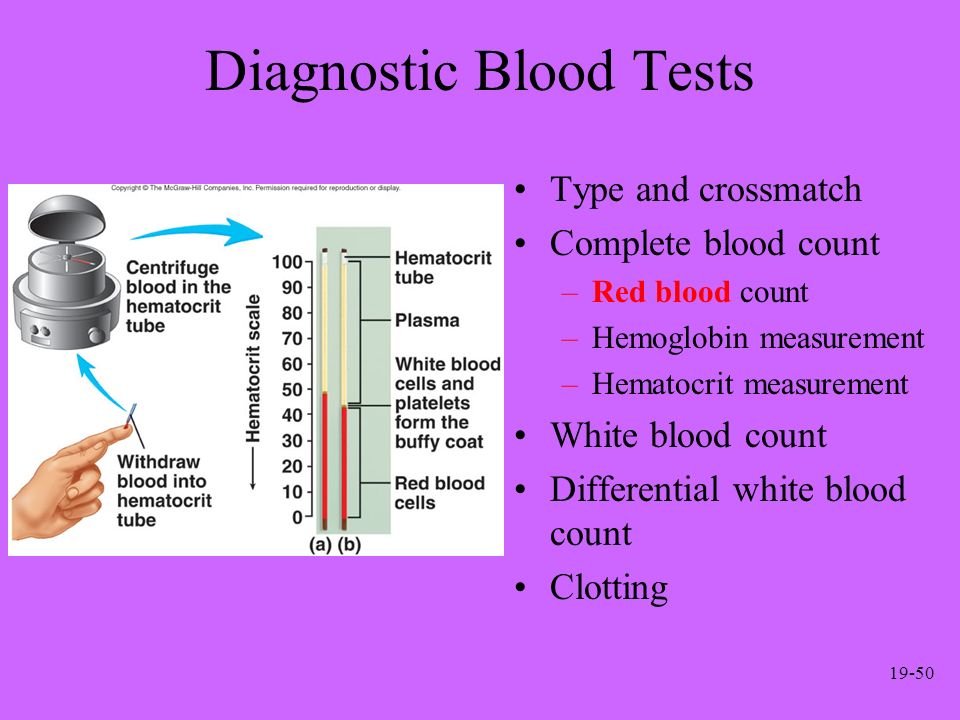


 Monocytes are formed in the bone marrow. These cells are involved in the regulation and differentiation of hematopoiesis, then go to the tissues of the body and there they turn into macrophages. Monocytes are of great importance, as they are responsible for the initial activation of the entire human immune system.
Monocytes are formed in the bone marrow. These cells are involved in the regulation and differentiation of hematopoiesis, then go to the tissues of the body and there they turn into macrophages. Monocytes are of great importance, as they are responsible for the initial activation of the entire human immune system. The main function is the expansion of blood vessels during infection.
The main function is the expansion of blood vessels during infection.